The Phoenix
des Lumières
A historical site
The Phoenix des Lumières is located in a former puddling and rolling mill in the city of Dortmund. Culturespaces aims to bring the site back to life by creating a large digital art centre that will present major immersive exhibitions.
1843
Production is launched
Hermann Dietrich Piepenstock, one of the main steel manufacturers in the west of the Kingdom of Prussia, moved to Dortmund-Hörde in around 1840 to create his own blast furnace, reservoir, and rolling mill. Production began in 1843.
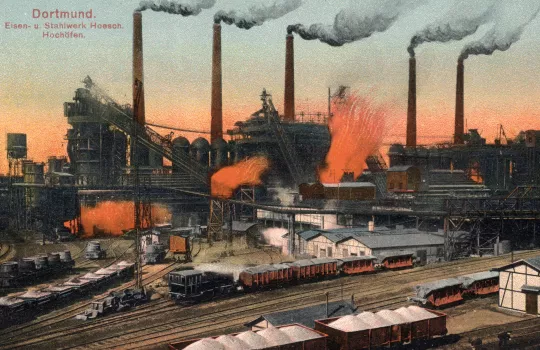
Iron and steel works Hoesch, blast furnaces. Dortmund, c. 1908
© akg-images
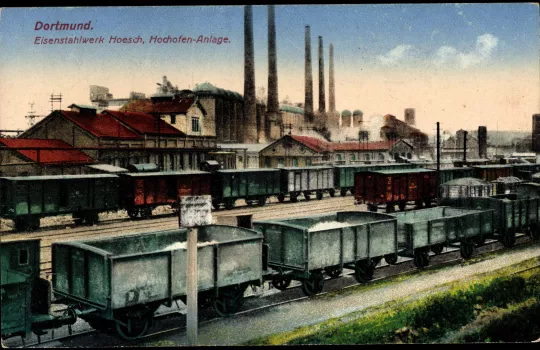
Eisenstahlwerk Hoesch, Hochofen Anlage, Güterzüge, Dortmund
© akg-images / arkivi
Still very dependant on importations of pig iron, the region had a blast furnace factory constructed in 1852 on the present-day site of Phoenix-West, in order to reduce its dependency.
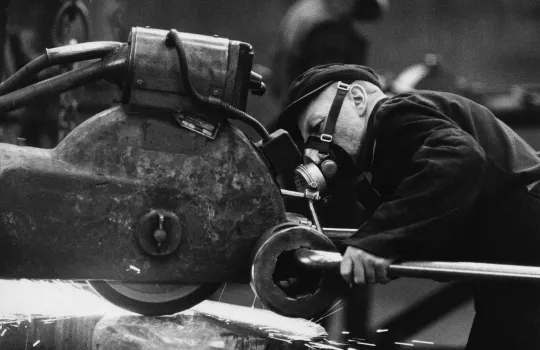
Steel mill Friedrich-Krupp-AG. Workers at a grinding machine, 1957, Essen
© akg-images / Erich Lessing
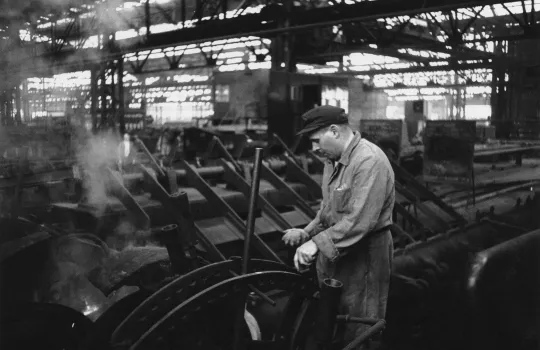
Essen, Steel mill Friedrich-Krupp-AG. Inside view of a workshop. 1955
© akg-images / Erich Lessing
Innovations in the form of blasting techniques replaced the process of puddling, one of the industrial revolution’s major technologies.
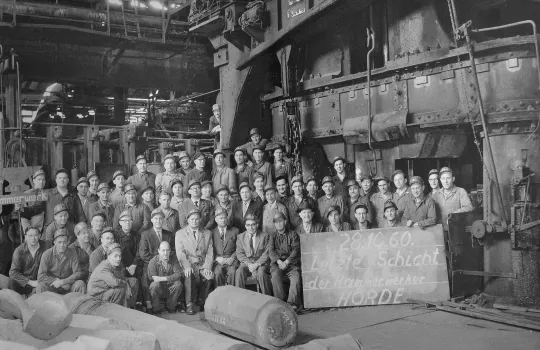
Letzte Schicht der Hammerwerker, Hörde Dortmund, 1960
© Studio Sébert / Sammlung Arbeitskreis "Hörde damals"
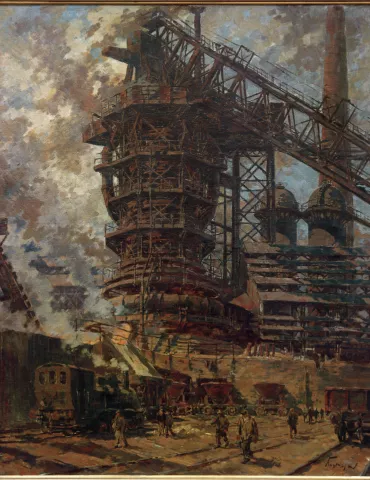
"Hochofen des Eisen– und Stahlwerkes Hoesch", von Hermann Kupferschmidt
© akg-images
In 1852, the company is the first in its sector in the Ruhr to implement the modern concept. In 1906, a merger creates Phoenix AG für den Bergbau und Hüttenbetrieb, one of the largest German coal and steel companies.
1913
Decline
Dortmund’s industrial activity underwent a period of strong economic growth from the nineteenth century until the middle of the twentieth century. The decline in these activities soon led to the city’s economic and demographic decline, which had major repercussions on companies.
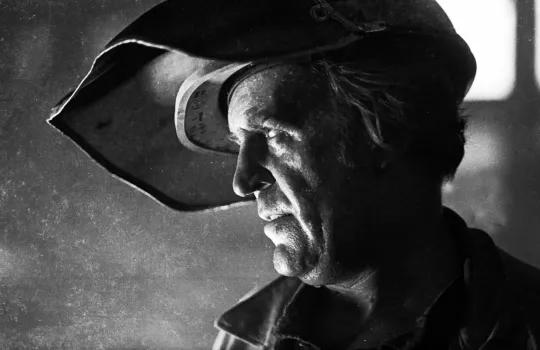
Steel production at the blast furnace, Hoesch AG steelworks in the Westfalenhütte in Dortmund. 1974
© akg-images / picture alliance / Klaus Rose
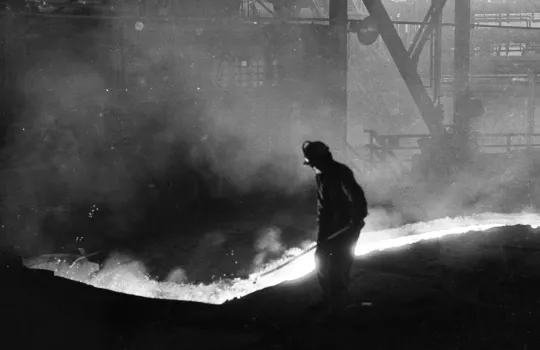
Steel production at the blast furnace, Hoesch AG steelworks in the Westfalenhütte in Dortmund. 1974
© akg-images / picture alliance / Klaus Rose
In 1913, Dortmund produced several million tonnes of coal and coke, but the successive wars had a negative impact on its economy. The German steel working industry was reorganised, leading to company mergers and changes of ownership.
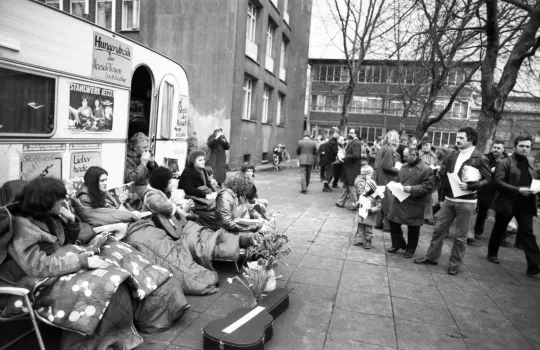
Women of steel workers of Hoesch AG went on a hunger strike on February 4, 1980 out of concern for their husbands' jobs
© akg-images / picture alliance / Klaus Rose
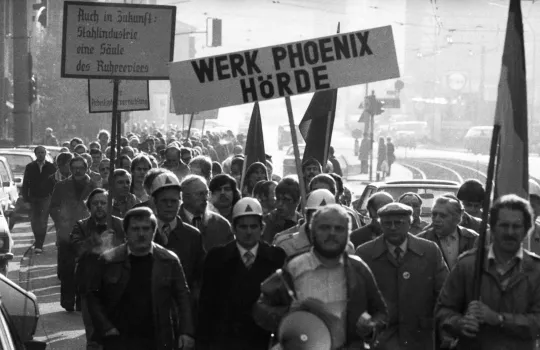
Approx. 5000 steel workers of Hoesch AG took to the streets to protest during a meeting of the board to keep their jobs, 1980
© akg-images / picture alliance / Klaus Rose
As of 1958, there were mass layoffs in the mining industry. The successive closures of the factories were incomprehensible for the local population, for whom the industrial activity shaped the city’s identity.
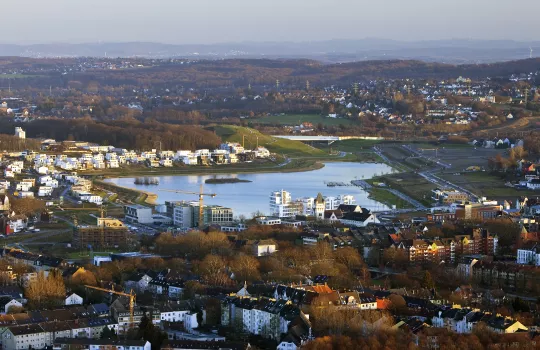
View of Lake Phoenix in the Hörde district, Dortmund, 2013
© akg-images / Stefan Ziese
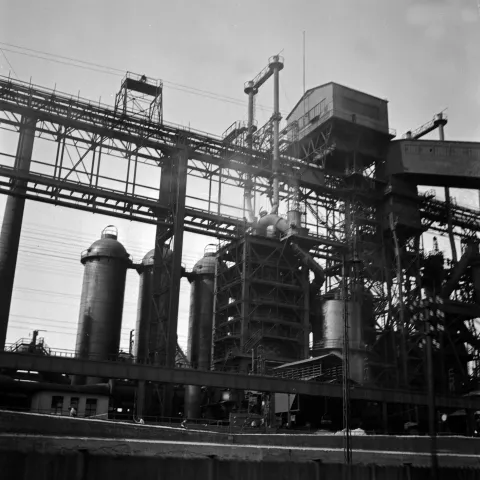
Industrieanlage in Dortmund, 1930er Jahre
© akg / mauritius images / Karl Heinrich Lämmel
In 1998, the blast furnace’s blow-moulding hall was closed and the industrial complex disappeared in 2001. Lake Phoenix was created on the site of the steelworks and the innovation centre Phoenix West on the blast furnace’s former site.
2004
The transformation into a cultural site
Since the beginning of 2000, a plan was implemented to convert the industrial complex into a cultural space.
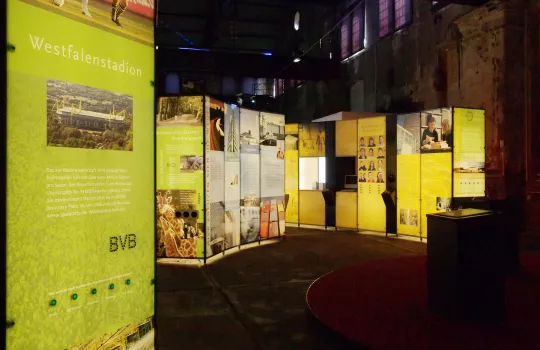
Blick in die Dauerausstellung "Das neue Dortmund" in der Phoenixhalle, Dortmund, 2007
©Rainer Knäpper, all rights reserved
Five years after the factory’s closure, the idea was conceived to transform the former blow-moulding hall into an exhibition and events space.
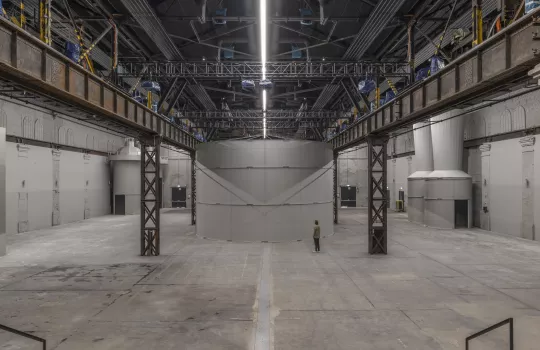
© Culturespaces
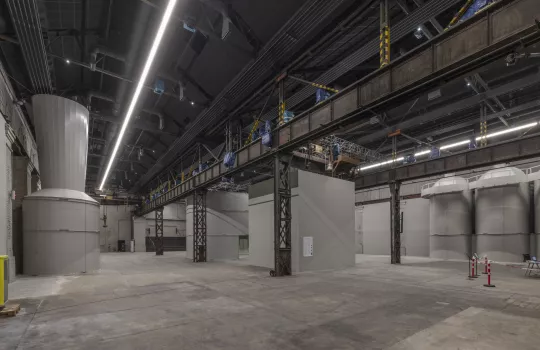
© Culturespaces
The renovation work began in the immense 2,200 m² hall, which was known as the Phoenix Halle. After becoming a site dedicated to the arts, the site hosted in 2004 the second presentation of the ‘Nam June Paik Award’, the international prize of the media arts.
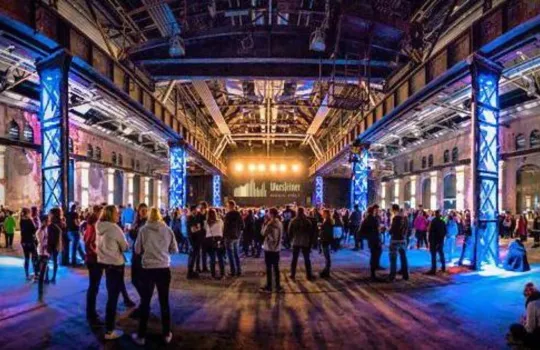
Warsteiner Music Hall, Veranstaltungsort für Live-Musik in Dortmund
© Warsteiner Music Hall/all rights reserved
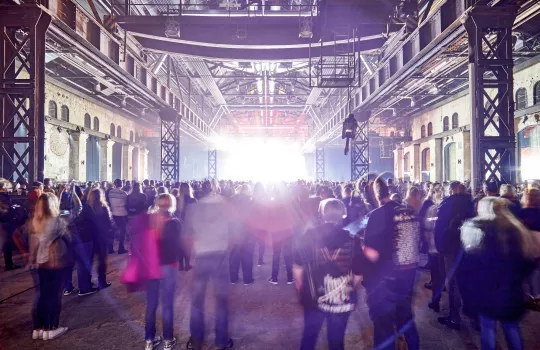
Konzert in Warsteiner Music Hall, 2017, Dortmund, Photo : © Dominic Krause
The German hip-hop group ‘Die Fantastischen Vier’ transformed the exhibition hall into a concert room; the first concert was held in November 2017 and was sold out with 3,600 visitors. The group inaugurated the hall in April 2018 and named it the ‘Warsteiner Music Hall’.
2022
Phoenix des Lumières
Impressed by the site with its 13-metre high walls and its 3,000 m² surface area, Culturespaces was entrusted with the management of the site in 2022.
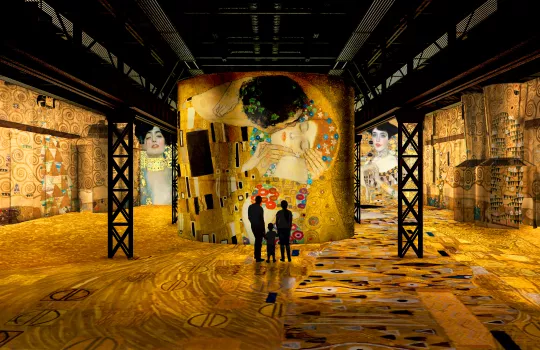
Gustav Klimt : working drawing of The Stoclet Frieze (Brussels), Detail: The Expectation and The Tree of Life, 1905-1909, Austrian Museum for Applied Art, Vienna; © Peter Willi / Bridgeman Images - Judith, 1901, and The Kiss, 1908, Osterreichische Galerie Belvedere, Vienna, Austria, © akg-images / Erich Lessing - Portrait of Adele Bloch-Bauer I, 1907, Neue Galerie, NY, USA, © Luisa Ricciarini / Bridgeman Images
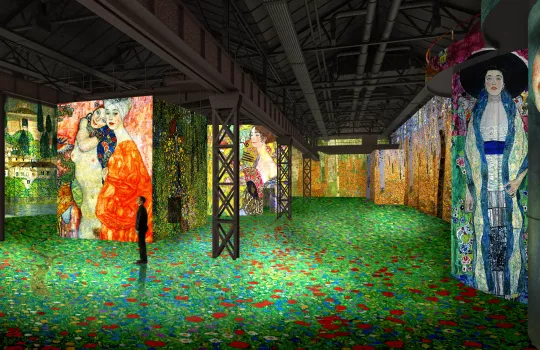
Gustav Klimt, Church in Cassone, 1913 , private collection and Beech Forest I, c. 1902, Staatliche Kunstsammlungen, Galerie Neue Meister, Dresden, © akg-images - Friends II, 1916-17, Salzbourg, Galerie Welz, destroyed by fire in 1945, © akg-images / Erich Lessing - Country Garden with crucifix, 1911, private collection, © akg-images/Imagno - Lady with a Fan, 1917-18, Wolfgang Gurlitt-Museum, Linz, akg-images / Imagno / Austrian Archives - The Birch Wood, 1903 , private collection, © Bridgeman Images - Portrait of Adele Bloch-Bauer II, 1912, private collection, Photo © Christie's Images / Bridgeman Images - Portrait of a young woman, 1916-17, Galleria d'Arte Moderna, Ricci, Oddi, Italy; © NPL - DeA Picture Library / Bridgeman Images - Flower garden, 1905-07, private collection, © Christie's Images / Bridgeman Images
The unique architecture of the buildings is a showcase that highlights the works of the most famous artists in the history of art and provide visitors with a unique immersive experience.
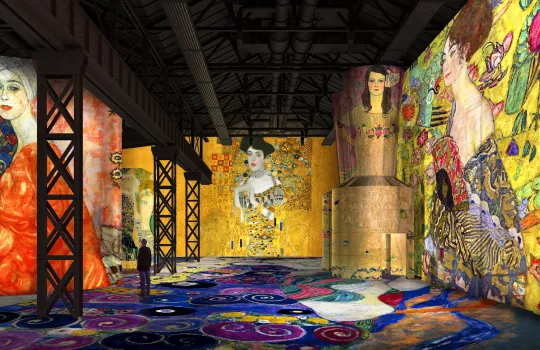
Gustav Klimt: Friends II, 1916-17, Salzbourg, Galerie Welz, destroyed by fire in 1945, Friends (Water Serpents), 1904-1907, Osterreichische Galerie Belvedere, Vienna, Austria, and Virgin, c.1913, Narodni Galerie, Prague, Czech Republic, © akg-images / Erich Lessing - Portrait of Adele Bloch-Bauer I, 1907, Neue Galerie, New York, USA, © Luisa Ricciarini / Bridgeman Images - Mada Primavesi, 1912-13, Metropolitan Museum of Art, New York, USA; © Bridgeman Images - Lady with a Fan, 1917-18, Wolfgang Gurlitt-Museum, Linz, Austria, © akg-images / Imagno / Austrian Archives
The Phoenix des Lumières opened to the public on 28 January 2023 with the exhibitions ‘Gustav Klimt: Gold and Colour’ and ‘Hundertwasser, in the Wake of the Vienna Secession’.